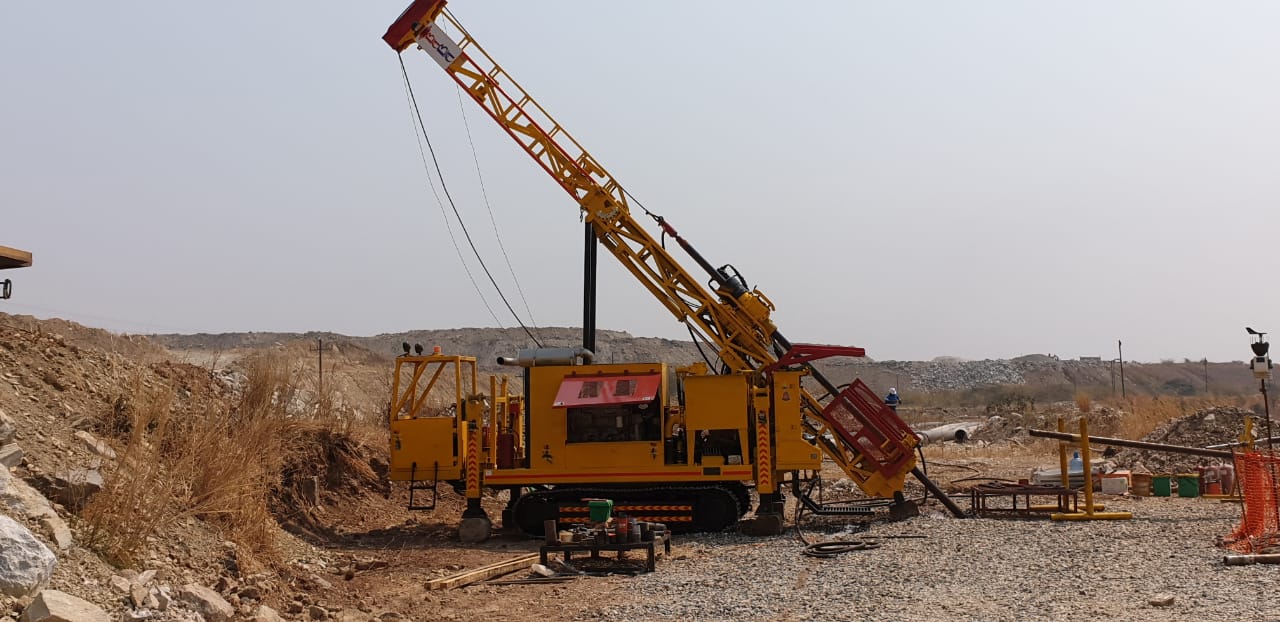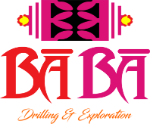Diamond Core Drilling
Diamond Drilling is used in the mining industry to probe the contents of known ore deposits and potential sites. By withdrawing a small diameter core of rock from the orebody, geologists can analyse the core by chemical assay and conduct petrologic, structural and mineralogical studies of the rock.
Diamond drilling is much slower than reverse circulation (RC) drilling due to the hardness of the ground being drilled. Drilling of 1200 to 1800 meters is common and at these depths, ground is mainly hard rock. Techniques vary among drill operators and what the rig they are using is capable of, some diamond rigs need to drill slowly to lengthen the life of drill bits and rods, which are very expensive and time consuming to replace at extremely deep depths.
As a diamond drill rig cores deeper and deeper the time consuming part of the process is not cutting 5 to 10 more feet of rock core but the retrieval of the core with the wire line & overshot tool. Core samples are retrieved via the use of a core tube, a hollow tube placed inside the rod string and pumped with water until it locks into the core barrel. As the core is drilled, the core barrel slides over the core as it is cut. An "overshot" attached to the end of the winch cable is lowered inside the rod string and locks on to the backend (aka head assembly), located on the top end of the core barrel. The winch is retracted, pulling the core tube to the surface. The core does not drop out of the inside of the core tube when lifted because either a split ring core lifter or basket retainer allow the core to move into, but not back out of the tube.
Diamond core drill bits Once the core tube is removed from the hole, the core sample is then removed from the core tube and catalogued. The Driller's assistant unscrews the backend off the core tube using tube wrenches, then each part of the tube is taken and the core is shaken out into core trays. The core is washed, measured and broken into smaller pieces using a hammer or sawn through to make it fit into the sample trays. Once catalogued, the core trays are retrieved by geologists who then analyses the core and determine if the drill site is a good location to expand future mining operations.

Why Choose Us?
WE REALLY LOVE WHAT WE DO & OUR WORK ON EVERY PROJECT TRULY REFLECTS THAT..
With years of experience and knowledge behind our team, BDECL Services are experts in the application of dual wall reverse circulation methods. In extreme drilling conditions of this technique, our experience will offer the maximum sample recovery achievable. Major advantages of this include:
- Recovery of uncontaminated samples in high water bearing formation
- Faster penetration than standard rotary or core drilling
- Lower costs due to increased production
- Reduced bit and mud consumable costs
- No lost circulation even through fractures, voids and joints
- No surface casing as the outer pipe supports the bore hole while circulation is maintained internally.
- Straighter holes with flush joint pipe while drilling with RC.
VAST EXPERIENCE
Our Experience in Drilling & Exploration Services span over a period of 3 decades with provision of these services in different parts of the world
TECHNICAL KNOW-HOW
Our team comprises of individuals with technical knowledge and expertise that makes our workforce standout
MACHINERY & EQUIPMENT
We have world class renowned Machinery & Equipment. View our Fleet list for more information

